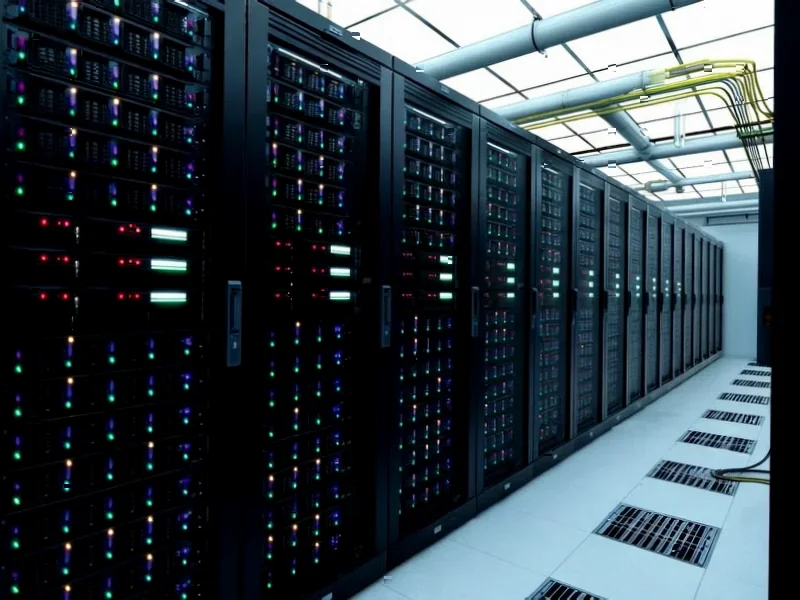According to GSM Arena, OpenAI has announced a strategic partnership with Amazon Web Services that will enable the AI company to run ChatGPT and other advanced AI workloads on AWS infrastructure effective immediately. The seven-year deal represents a $38 billion commitment and will utilize Amazon EC2 UltraServers featuring hundreds of thousands of Nvidia GPUs with scaling capacity to tens of millions of CPUs. All AWS capacity under this agreement will be deployed before the end of 2026, with an option to expand further from 2027 onward. The architecture clusters Nvidia GB200 and GB300 GPUs on the same network for low-latency performance across interconnected systems, according to the company’s announcement. This massive infrastructure investment signals a new phase in the cloud AI arms race.
The Multi-Cloud Strategy Emerges
This deal fundamentally reshapes OpenAI’s relationship with Microsoft, which has invested $13 billion in the AI company and heavily integrated OpenAI technology into Azure services. While not a complete departure from Microsoft, this massive AWS commitment demonstrates OpenAI’s determination to avoid vendor lock-in and maintain negotiating leverage. For enterprises building AI strategies, this signals that even the closest technology partnerships now require multi-cloud considerations. The $38 billion scale suggests OpenAI anticipates exponential growth in compute demand that exceeds what any single provider can guarantee, creating a new paradigm where leading AI companies will strategically distribute workloads across competing cloud platforms.
The GPU Gold Rush Intensifies
Amazon’s deployment of EC2 UltraServers with “hundreds of thousands of Nvidia GPUs” represents the largest publicly disclosed GPU cluster commitment to date. This scale dwarfs previous AI infrastructure investments and sets a new benchmark for what’s required to compete in generative AI. The specific mention of GB200 and GB300 Nvidia processors indicates OpenAI is betting heavily on Nvidia’s next-generation architecture rather than exploring alternatives from AMD or developing custom silicon. For AI startups and researchers, this creates both opportunity and concern – while AWS capacity expands dramatically, OpenAI’s massive reservation could potentially constrain availability for smaller players facing already challenging GPU access.
Enterprise AI Deployment Implications
For businesses integrating ChatGPT and other OpenAI technologies, this partnership could significantly improve reliability and reduce latency through AWS’s global footprint. Enterprises with existing AWS relationships may find smoother integration paths, while Microsoft-centric organizations face new complexity in their AI deployment strategies. The scale of this investment suggests OpenAI anticipates serving enterprise workloads at volumes that dwarf current consumer ChatGPT usage, potentially signaling a strategic pivot toward B2B revenue streams. Companies evaluating long-term AI infrastructure commitments should note that even market leaders like OpenAI are hedging their bets across multiple cloud providers.
Shifting Cloud Provider Dynamics
This deal represents a major coup for AWS in its battle against Microsoft Azure for AI supremacy. While Microsoft gained early advantage through its OpenAI partnership, AWS has now secured what may become the largest AI workload in history. Google Cloud, meanwhile, faces increased pressure as it risks being sidelined in the era of foundation model deployment. The seven-year term and $38 billion commitment provide AWS with predictable revenue while giving OpenAI unprecedented scale guarantees. This could trigger similar mega-deals as other AI companies seek to secure their own infrastructure partnerships, potentially creating a tiered market where only the best-funded players can access sufficient compute resources.
The $38 Billion Question
The sheer scale of this investment raises fundamental questions about AI’s economic sustainability. At approximately $5.4 billion annually, OpenAI must generate substantial revenue just to cover infrastructure costs before considering research, development, and profit. This suggests either dramatically higher pricing for AI services or the anticipation of massive volume growth that current usage patterns don’t support. The 2026 deployment deadline creates urgency for OpenAI to develop revenue-generating enterprise products that can justify this unprecedented infrastructure commitment. How this plays out will determine whether today’s AI boom evolves into sustainable business or becomes the next technology bubble.




